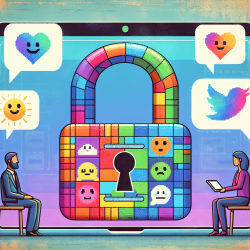In the evolving landscape of online therapy, effectively communicating emotional content can be challenging. However, recent research from the systematic review titled Techniques for Improving Communication of Emotional Content in Text-Only Web-Based Therapeutic Communications provides valuable insights into how therapists can enhance their online interactions. This blog will summarize key findings and offer practical tips to help practitioners improve their skills.
Key Findings from the Research
The systematic review identified several techniques that can be used to convey emotion in text-only communications. Here are the most notable findings:
- Emoticons and Smileys: These were found to be more effective in influencing the emotional impact of a message than no cue at all. They can convey a limited amount of emotion, helping to bridge the gap created by the lack of nonverbal cues.
- Positive Emotional Impact: The use of smileys or emoticons was shown to increase positive emotional responses, such as smiling and reduced frowning, in recipients.
- Message Interpretation: Emoticons and smileys can affect how a message is perceived, influencing the perceived attitude and attention of the writer.
Practical Tips for Therapists
Based on these findings, here are some practical tips for therapists to enhance their online communication:
- Use Emoticons Wisely: Incorporate smileys and emoticons to convey positive emotions and make your messages more relatable. However, use them sparingly to avoid overloading the communication.
- Emotional Bracketing: While not extensively covered in the review, emotional bracketing (using words in brackets to describe emotions) can be a powerful tool to convey more complex emotions.
- Positive Reinforcement: Use emoticons to reinforce positive feedback and praise. This can help in building a stronger therapeutic alliance and increasing participant satisfaction.
Encouraging Further Research
While the findings are promising, there is still much to learn about effectively conveying emotion in text-only therapeutic communications. Therapists are encouraged to stay updated with ongoing research and continuously refine their techniques.
To read the original research paper, please follow this link: Techniques for Improving Communication of Emotional Content in Text-Only Web-Based Therapeutic Communications: Systematic Review.










